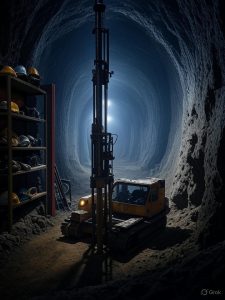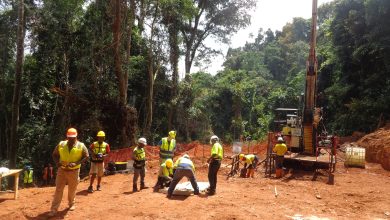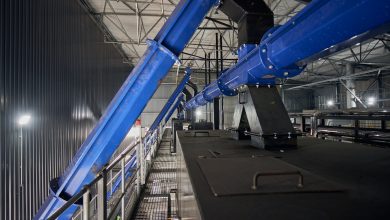
Mining operations are becoming more complex, and regulations more stringent. To manage this, companies are adopting smart innovations, ranging from autonomous systems to real-time monitoring and predictive analytics. These technologies are helping them enhance safety, minimise risk, and, more importantly, ensure alignment with regulations.
Innovations that can enable mining companies to achieve compliance with mine health and safety regulations – once viewed as a luxury they could do without – are now increasingly regarded as a necessity. These innovations, referred to as smart technologies in some circles, are radically transforming compliance.
Necessity: The Driver of Decisions
There is an old expression: “Necessity is the mother of innovation”. This fits perfectly within the context of growth in the uptake of smart technologies in mine health and safety.
The pressing need to maintain compliant operations has driven mining companies to embrace innovations in this space. Several factors are behind this shift.
In the past, due to loopholes in regulations, organisations could escape with minimal or no consequences for breaches. However, recent amendments to legislation have highlighted how serious regulators are about enforcement.

South African Case Study
In South Africa, for instance, there have been amendments to both the Occupational Health and Safety Act (OHSA) and the Mine Health and Safety Act (MHSA). Most recently, in October 2024, the Minister of Mineral and Petroleum Resources published an explanatory summary of the draft Mine Health and Safety Amendment Bill (“the Bill”). The Bill is scheduled to be introduced in the National Assembly.
According to a review from Webber Wentzel Attorneys (Draft Mine Health and Safety Amendment Bill, 2024: Key considerations for employers): “The intention, as set out in the Bill, is to, among other things, streamline administrative processes and strengthen managerial responsibility and accountability.”
Clearly, the changes are a clarion call for mining companies to raise the bar in their efforts to ensure compliance.
The Department of Mineral and Petroleum Resources (DMPR)’s directive that led to the suspension of activity at Impala Platinum in 2024 following an accident is a strong indication of zero tolerance for breaches. The widely covered event resulted in fatalities.
While in some cases the financial penalties may seem like a mere reprimand, the real cost lies in production downtime: potential revenue losses that can run into millions must be factored in. This is certainly not something shareholders would take lightly.
In addition, reputational damage from negative publicity can be severe. As harsh as it may sound, one incident can tarnish the public image of a well-established brand that has taken years to build. This is not worth the gamble.

Complexity of Contemporary Mining
Beyond the obligation of complying with health and safety regulations, mines are under pressure from multiple fronts: shareholders and investors seeking returns, expectations regarding environmental best practices, and the need to maintain sound relations with stakeholders.
Compounding matters are rising operating costs, particularly energy. Energy accounts for no less than 30 percent. This figure could even be a conservative estimate, considering ongoing price hikes.
Moreover, underground mining for precious metals and PGMs is moving into deep and ultra-deep levels in search of viable ore, and this pursuit does not come any cheap. It demands investment in robust equipment capable of operating in rugged conditions.
Surface mining is not in a better position either. It faces unique challenges, chief among them the need to extract more from increasingly depleted ore-bearing rock: essentially, producing more with less.
This new environment presents significant challenges: increased health and safety risks, stricter environmental compliance demands, and the need to maintain sound stakeholder relations.
Given the mounting pressures, ensuring compliance with mine health and safety regulations is becoming increasingly difficult. While well-intentioned, conventional approaches such as deploying human inspectors, using analogue equipment to analyse conditions, and relying on employees to make rational decisions independently may fall short. This widens the existing gap in compliance capacity within mining operations.
Perfect Proliferation
Thus, the rapid proliferation of innovations in mine health and safety could not have come at a better time. It presents mining operations with a wide choice of solutions to meet critical safety and compliance objectives.
New Technologies
Based on the latest industry reports and developments, several categories of innovations are being added to the toolbox. Specificaly, in the context of modern mining, the following stand out:
- Automation and Robotics
There has been an increase in the use of autonomous vehicles, robotic drilling systems, and remotely operated equipment. Deploying these in high-risk zones significantly reduces the need for humans to work in hazardous environments.
Sensor-equipped drones have transformed the inspection of shafts, pit faces, equipment, and air quality. These drones can access areas that are inaccessible to humans. These tasks that would otherwise pose serious risks.
For underground mapping, ground-based robots are now used to generate 3D images using LiDAR and IMU to identify hazards in advance.
- Advanced Monitoring Systems
Real-time AI and IoT platforms analyse sensor data — such as dust, gas, vibration, and micro-seismic activity — to forecast hazards like rockfalls, gas build-ups, or equipment failures. These systems also track worker location and trigger alerts for immediate intervention.
Another area of advanced monitoring is micro-seismic monitoring and roof failure alerts. In underground coal mines, the fall of ground (goafing) is a serious issue. To address this, South Africa’s CSIR, in partnership with Guduza Technologies, has developed GoafWar, a real-time micro-seismic monitoring platform that provides early warnings of roof collapses and goaf failures.
- Wearable Technology (Wearables)
The integration of smart sensors into personal protective equipment (PPE) and wearable devices is another groundbreaking development. These wearables monitor worker location, vital signs, and exposure to hazardous conditions, enabling timely alerts and interventions.
Smart helmets and badges, for example, monitor heart rate, oxygen saturation, fatigue, gas exposure (such as methane and carbon dioxide), dust levels, and location. If danger levels are detected, they issue real-time alerts to both workers and supervisors.
Another recent development is the integration of wearables into geofencing and proximity detection systems, designed to prevent workers from entering restricted or unsafe zones.
- Immersive AR and VR Training
Another area gaining traction is the use of Virtual Reality (VR) and Augmented Reality (AR) to simulate emergency situations during training.
Traditionally, virtual models of underground environments were shown in lecture rooms via PowerPoint presentations. If that could be considered modern, even more outdated is the instructor standing in front of employees with a whiteboard and marker in hand.
Instead, operations are now using VR simulations to create immersive and realistic training scenarios of emergencies such as fires and explosions. This approach improves preparedness and knowledge retention, allowing workers to plan and rehearse hazard responses before entering actual operational zones.
Keeping Employees from Harm’s Way
When used effectively, these innovations can help mining operations improve compliance with health and safety regulations by:
• Keeping employees out of dangerous environments,
• Predicting and preventing incidents, and
• Promoting a proactive safety culture and improving worker well-being.
The benefits extend beyond health and safety compliance. These innovations also contribute to improved productivity and reduced emissions.
The Nutshell
The adoption of smart safety technologies is no longer a luxury but a necessity in contemporary mining. Certainly, the adoption of smarter technologies improves compliance.






